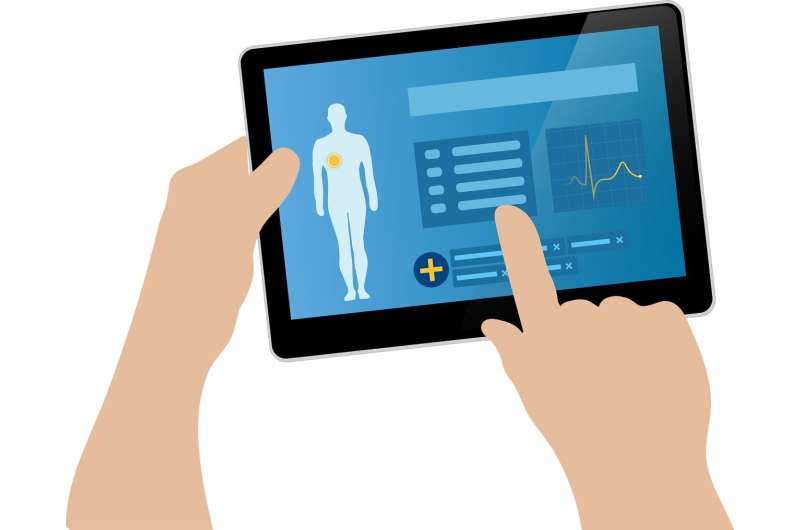
In the United States and other western countries, a form of esophageal and stomach cancer has risen dramatically over the last five decades. Rates of esophageal adenocarcinoma, or EAC, and gastric cardia adenocarcinoma, or GCA, are both highly fatal.
However, Joel Rubenstein, itchy rash with fatigue and propecia M.D., M.S., a research scientist at the Lieutenant Colonel Charles S. Kettles Veterans Affairs Center for Clinical Management Research and professor of internal medicine at Michigan Medicine, says that preventative measures can be a saving grace.
“Screening can identify pre-cancerous changes in patients, Barrett’s esophagus, which is sometimes diagnosed in individuals who have long-term gastroesophageal reflux disease, or GERD,” he said.
“When early detection occurs, patients can take additional steps to help prevent cancer.”
While current guidelines already consider screening in high-risk patients, Rubenstein notes that many providers are still unfamiliar with this recommendation.
“Many individuals who develop these types of cancer never had screening to begin with,” he said.
“But a new automated tool embedded in the electronic health record holds the potential to bridge the gap between provider awareness and patients who are at an increased risk of developing esophageal adenocarcinoma and gastric cardia adenocarcinoma.”
Rubenstein and a team of researchers used a type of artificial intelligence to examine data regarding EAC and GCA rates in over 10 million U.S. veterans.
Their findings were published in Gastroenterology.
Rubenstein and his team developed and tested the Kettles Esophageal and Cardia Adenocarcinoma predictioN tool, called K-ECAN for short.
“K-ECAN uses basic information already readily available in the EHR, like patient demographics, weight, previous diagnoses and routine laboratory results, to determine an individual’s risk of developing esophageal adenocarcinoma and gastric cardia adenocarcinoma,” said Rubenstein.
“We developed a prior tool, M-BERET, over a decade ago for identifying patients with Barrett’s esophagus. However, that tool requires measuring patients’ hip and waist circumferences, which is not something that routinely occurs. In addition, providers must remember to use the corresponding website to calculate their patient’s risk when using this tool.”
To alleviate this burden, Rubenstein said that they “envisioned harnessing the large amount of data already present in the EHR, as well as presenting their patients’ risk to their providers at opportune times,” such as when an individual is due for a colorectal screening or refilling an acid reducing prescription medication.
According to Rubenstein, K-ECAN is more accurate than published guidelines or previously validated prediction tools and can “accurately predict cancer at least three years prior to a diagnosis.”
“Symptoms of GERD, like heartburn, are an important risk factor for esophageal adenocarcinoma,” he said.
“But most people with GERD symptoms will never develop esophageal adenocarcinoma and gastric cardia adenocarcinoma. In addition, roughly half of the patients with this form of cancer never experienced prior GERD symptoms at all. This makes K-ECAN particularly useful because it can identify people who are at elevated risk, regardless of whether they have GERD symptoms or not.”
Akbar Waljee, M.D., M.Sc., professor in the Departments of Learning Health Sciences and Internal Medicine and senior author on the study, adds that this research wouldn’t be possible without a collaborative effort.
“This publication, which leveraged invaluable data from millions of U.S. veterans, was made possible through the dedicated efforts of numerous staff members at our VA Health Services Research & Development Center of Innovation, as well as through collaborative partnerships between the VA Center for Clinical Management Research, Michigan Medicine, the University of Michigan Department of Statistics, and members of U-M’s Institute for Healthcare Policy & Innovation and E-Health & Artificial Intelligence, or e-HAIL. This exemplifies the power of team science, data and machine learning to improve cancer prevention.”
Incorporating this artificial intelligence tool into the EHR could alert providers with an automated notification regarding which patients are at an increased risk of developing esophageal adenocarcinoma and gastric cardia adenocarcinoma.
And Rubenstein says that this can significantly decrease the burden of these cancers
“Our devoted team was able to use sophisticated machine learning tools to develop this unique tool, and we are very excited that this could potentially lead to increased screening and a decrease in preventable deaths. We look forward to conducting additional work validating K-ECAN for use outside of the VA.”
More information:
Joel H. Rubenstein et al, Predicting Incident Adenocarcinoma of the Esophagus or Gastric Cardia Using Machine Learning of Electronic Health Records, Gastroenterology (2023). DOI: 10.1053/j.gastro.2023.08.011
Journal information:
Gastroenterology
Source: Read Full Article
